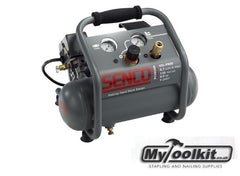
Hi Chuck again
I’d like to talk a little this week about general care and maintenance of your compressor. It tends in many workshops to get overlooked until something goes wrong and yes you guessed it………it’ll be when you have that very important job to get done!!
So here’s just some general care tips that will ensure smooth running and limit those nasty surprises.

1. Check oil level regularly – depending on the type and model of compressor this will be either indicated by a dip stick or sight glass. Exception to this rule of course is if your compressor is oil free 🙂
2. Change Oil – After a period of time this oil may change colour and become milky in appearance. This is an indication that moisture has contaminated the oil and it is good practise to change the oil at this stage. Consult the manual for advice regarding the grade of oil required.
3. Drain moisture from air reservoir – It is good practice to drain the tank/reservoir on a regular basis. I personally drain the tank every time the compressor is shut down via the drain valve at the bottom of the tank. As the video suggests, be very careful if doing this indoors as the moisture will possibly be infused with rust……very messy!!
4. Clean Air Filter – Depending on the design the filter can be removed and debris can be blown out with use of an air blow gun. The cleaning of this filter ensures smooth filtered air flow to the air pump.
5. Clean cooling vanes – The compressor has cooling vanes to help transfer the generated heat to the atmosphere and should be kept clean by blowing debris away that may have accumulated. Whilst on this point it is good practise to ensure the compressor is in a well ventilated area to assist this cooling process.
6. Switching Compressor On/Off – Always switch the compressor On/Off via the switch on the pressure box. (Normally a push/pull red button) Switching On/Off at the mains may cause damage to the air pump.
7. Test Air Relief Valve – The test of the air relief valve is also good practice. The relief valve is sometimes made of brass and can be tested by pulling the ring pull ensuring smooth movement of the valve and making sure there is no debris on the valve seat.
These few tips will help to keep your compressor in tip top condition and give you many years of service. If you have any questions at all please give us a call on 0333 8000 345.
©

For more updates on tools we offer check out our Newsletter
Speak soon.
Regards
